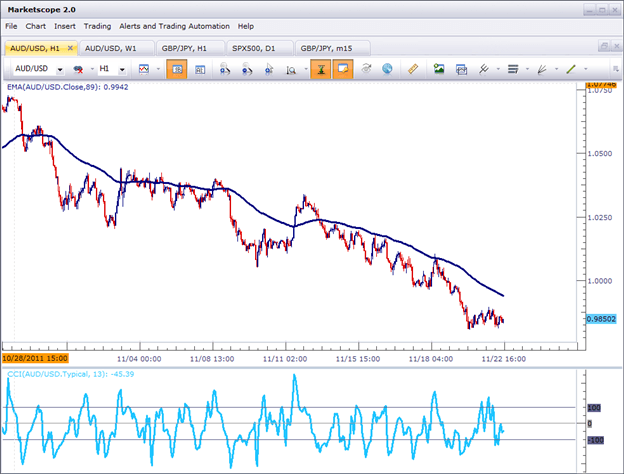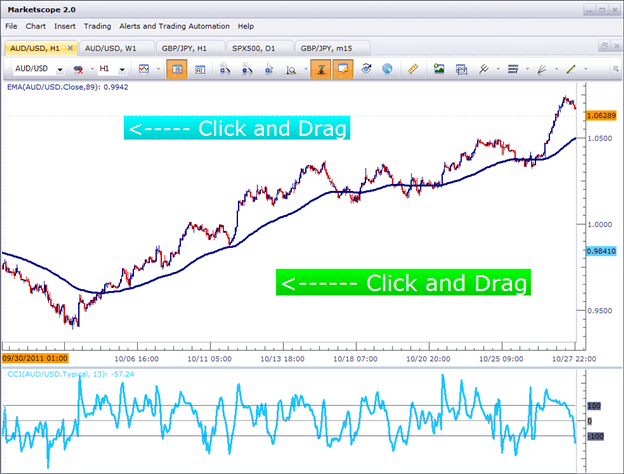Trading, like many other things in life, can be improved upon with experience. This is often where new traders fail. Once realizing this fact, they look at a very simple negotiation.
“Is learning to trade profitably worth my time?”
Myself and many other traders would (or maybe more accurately ‘have’) answered an emphatic ‘YES!’ to that question, and embarked on a learning process to get our results to the point that we want. But not everybody would be in that boat.
The difficult thing about experience when trading is the fact that that very same experience can cost us money. Over the years I’ve heard many flippantly claim ‘ah, that’s your tuition to the markets.’ And that may be the case. But there are other ways of earning experience in the age-old art of speculation.
Grain and rice traders, the original creators of technical analysis, would employ an element of ‘paper trading,’ to track hypothetical profits or losses for the strategies that they are trading.
This is akin to demo trading today; a way that we can test our theories and strategies on the market without financial risk. Is this exactly the same as trading live, no, because there isn’t a liquidity provider on the other end of your trade performing ACTUAL execution; but it can allow me to test my strategies in a dynamic environment.
The downside to demo trading or demo-testing a strategy is the fact that it may take a long time to get enough results to make a determination for my strategies consistency. If I want to test a strategy on a daily chart, it may take me an entire year just to place a few trades. And after those few trades, I’m not sure I’d be comfortable enough with the strategy to employ it live (after all, only a few trades were placed, how do I know whether this was an anomaly or not).
This is where manual back-testing can come into play. This is a mannerism in which I can simulate a live market environment with dynamic prices. It’s important to note any back-tests that we perform, manual or automated, suffer from a singular draw-back; and that is the fact that past performance is not necessarily going to replicate itself in that manner going forward. But that’s not the point of the manual back-test. The reason I am doing the test is to train myself, using the tools of the strategy being tested, so that I may know how to most effectively employ the approach.
I can do this on any timeframe, with any currency pair, and almost any strategy that I trade.
Step 1: Dress the chart
The first step when manual back-testing is to dress our charts up with the indicators that we will use in the strategy which we are testing. For this illustration, I’m going to use an 89 period EMA and a 13 period CCI. After getting the chart dressed, we are ready to proceed.

Created by James Stanley
Step 2: Take a step back in time
After we have our chart dressed, we need to go to a previous period on the chart. The here is that I want to be unfamiliar with price action for the tested period. I want prices to be as close to the dynamic of a real market as possible. I want this to be unpredictable.
To do this, I can simply click, and drag back in time to get to an earlier date on the chart.

Created by James Stanley
Step 3: Walk forward in time
This feature is very beneficial to traders that do a lot of manual back-testing, but often unknown to many. This has to do with the ‘forward,’ and ‘backwards,’ arrows on your keyboard.
If I wanted to go back 1 hour, I can simply press the ‘backwards-arrow key,’ one time.
However, if I’m testing on a 4 hour chart – 1 press of the forward or backwards arrow keys will be equivalent to moving forward or backwards 4 hours at a time.
This is an extremely convenient feature that can allow me to traverse a vast distance on the chart in a short period of time.
At this point, I want to walk forward on the chart until a I find a trade that meets my criteria. Once I do, I will pause, and we’re ready to move on to step 5.
Step 4: Record the results
This step can deviate between trader to trader based on style and mannerism of record-keeping. I urge all new traders or those new to manual back-testing to write each of these trades down; whether it be a journal, a spreadsheet, or a trading log. Some key information is of note here:
Where would you place your stop?
Where would you be looking to take profits?
You can record all this information, as well as any other observations that you have made. After a few trades, you will have a few pieces of information you can use to then make the strategy more effective for your goals. Trading both manual and automated requires the same discipline. Our Traits of Successful Traders guide should be taken in to consideration for all aspects of trading. This will ultimately benefit the trader in the long run. A full trading plan requires paying attention to all aspects included in the guide, which has been formulated after anaylzing millions of trades.
Step 5: Rinse and Repeat
After we have found a hypothetical trade, at that point we can walk further forward in the future to get an idea for how it may have worked out. Once again, we can record these results in our journals.
Then we can move on to the next trade. We can continue to do this until we feel the comfort, and the experience with the strategy to move on to the next step of testing. For some traders that’s testing with smaller balances, others take the leap directly into live markets, while other, such as myself – will then test the strategy on a demo account with live, dynamic pricing.
Frequently Asked Questions (FAQs)
Should new traders implement back testing strategies:
Back-testing strategies can be utilised via external third party advisors who develop their own strategies, or by developing your own. It is important to understand basic trading and the technical parameters that can be used in back testing such as moving averages, Ichimoku, ATR and many more. The combinations are almost limitless so having a thorough knowledge base is key. Back testing strategies can be very basic or extremely complex, so before delving into a strategy I would recommend testing it properly before trading live. Therefore, new traders can implement strategies, however it is advisable for more experienced traders with greater technical knowledge.
Next: Just Because Trading is Closed, It Doesn't Mean You Have to Be (4 of 50)
Previous: A Personal Trading Strategy
To contact James Stanley, You can follow James on Twitter @JStanleyFX.




